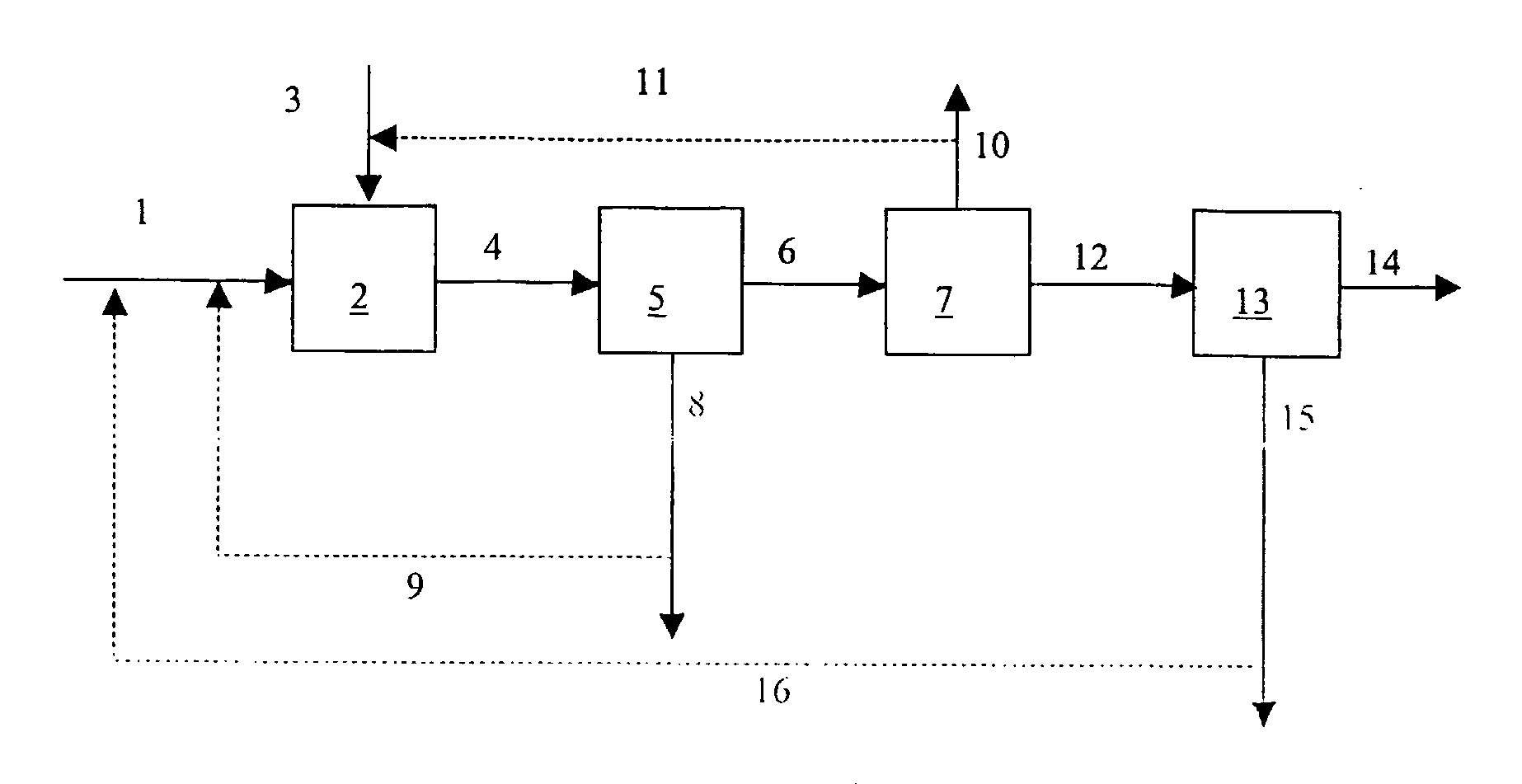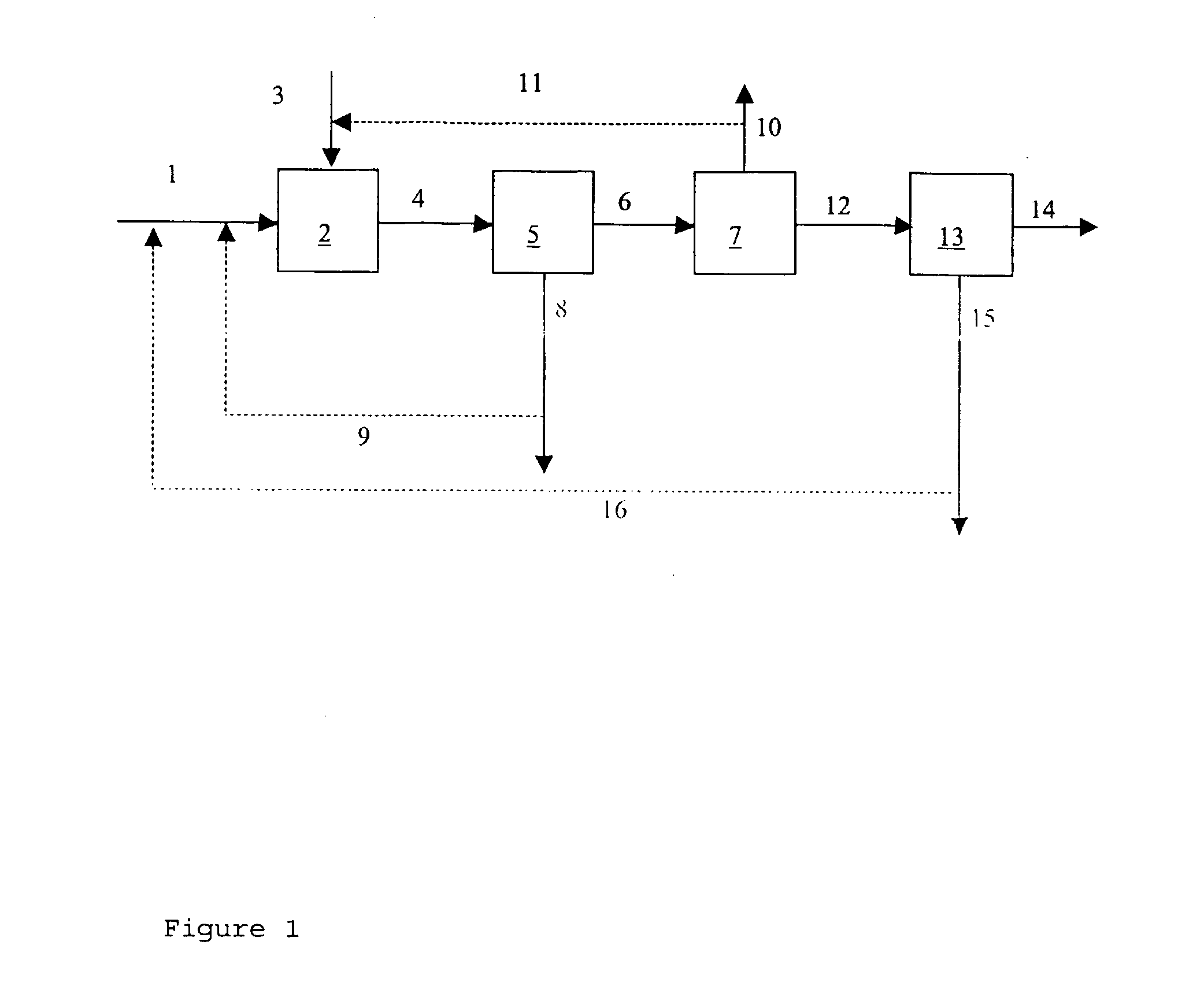Process for Producing Caco3 or Mgco3
a technology of caco3 and mgco3, which is applied in the direction of magnesium carbonates, chemistry apparatus and processes, inorganic chemistry, etc., can solve the problems of high transportation cost of both reactants, affecting the industrial applicability of the process, and unattractive economic effects of sub>sequestration processes using industrial waste materials, etc., to achieve the effect of effectively sequestering a part of the produced co2 at low temperatur
- Summary
- Abstract
- Description
- Claims
- Application Information
AI Technical Summary
Benefits of technology
Problems solved by technology
Method used
Image
Examples
example 1
[0050] An aqueous slurry of steel slag was made by mixing 200 g of steel slag with a volume-averaged particle size of 7 μm with 3900 g of water in a 5 L reactor vessel. At ambient conditions, i.e. a temperature of 22° C. and a pressure of 1 bar (absolute), pure CO2 was bubbled through the slurry during 24 hours. The aqueous phase was then separated from the solids and transferred to a separate vessel. CO2 was removed from the separated aqueous phase at room temperature by using nitrogen as strip gas. The CaCO3 precipitate was dried and weighed. The CaCO3 yield (weight of CaCO3 per volume of Ca(HCO3)2 solution) is reported in the Table.
example 2
[0051] An aqueous slurry of paper bottom ash slurry was made by mixing 32 g of paper bottom ash with 412 g of water in a 0.5 L reactor vessel. At ambient conditions, i.e. a temperature of 22° C. and a pressure of 1 bar (absolute), pure CO2 was bubbled through the slurry during 29 hours.
[0052] The amount of CO2 that was absorbed (mainly as CaCO3) by the paper bottom ash was measured at different points in time by taking a small sample of the paper bottom ash and measuring its weight loss upon heating the sample to 750° C. The CO2 absorption was calculated as the percent weight loss of the feedstock sample, based on the weight of the sample before heating, and is given in the Table.
[0053] After 29 hours, the aqueous phase was separated from the solids and transferred to a separate vessel. CO2 was removed from the separated aqueous phase at room temperature by using nitrogen as strip gas. The CaCO3 precipitate was dried and weighed. The CaCO3 yield (weight of CaCO3 per volume of Ca(H...
example 3
[0054] An aqueous slurry of paper bottom ash slurry was made by mixing 50 g of paper bottom ash and 4000 g of water in a 5 L reactor vessel. At ambient conditions, i.e. a temperature of 22° C. and a pressure of 1 bar (absolute), pure CO2 was bubbled through the slurry during 24 hours. After 24 hours, the aqueous phase was separated from the solids and transferred to a separate vessel. CO2 was removed from the separated aqueous phase by heating the aqueous phase to a temperature in the range of from 75 to 100° C. The thus-obtained CaCO3 precipitate was dried and weighed. The CaCO3 yield (weight CaCO3 per volume Ca(HCO3)2 solution) is reported in the Table.
PUM
| Property | Measurement | Unit |
|---|---|---|
| partial pressure | aaaaa | aaaaa |
| partial pressure | aaaaa | aaaaa |
| temperature | aaaaa | aaaaa |
Abstract
Description
Claims
Application Information
 Login to View More
Login to View More - R&D
- Intellectual Property
- Life Sciences
- Materials
- Tech Scout
- Unparalleled Data Quality
- Higher Quality Content
- 60% Fewer Hallucinations
Browse by: Latest US Patents, China's latest patents, Technical Efficacy Thesaurus, Application Domain, Technology Topic, Popular Technical Reports.
© 2025 PatSnap. All rights reserved.Legal|Privacy policy|Modern Slavery Act Transparency Statement|Sitemap|About US| Contact US: help@patsnap.com


